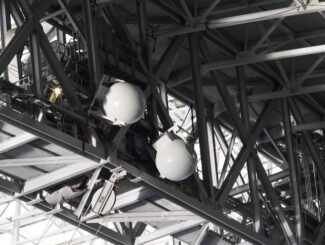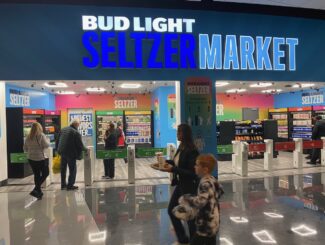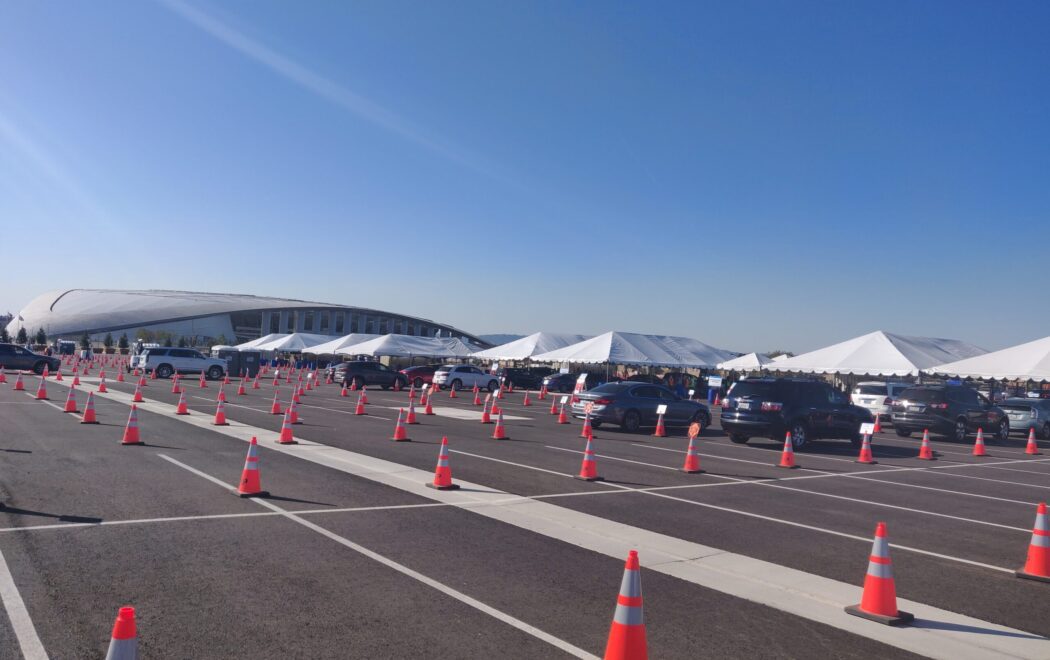
When it was finished, the temporary Covid-19 vaccination site for the Los Angeles Unified School District at Hollywood Park used a wireless network that was supported by optical fiber connections. While that sounds straightforward and simple, in this case there’s a story behind the story about how the fiber found its way to the vaccination site.
At the early March opening, representatives from the Los Angeles Rams, the school district and the participating health organizations lauded the drive-through operation as a crucial part of the effort needed to vaccinate teachers and staff. For the IT staff at Hollywood Park — the retail, commercial and residential area surrounding SoFi Stadium — building a network to support the temporary vaccination site was part of the development’s charter of being part of the neighborhood.
“The network at the vaccination site reflects well on our desire to be part of the community,” said Janette Smrcka, vice president of IT at SoFi Stadium and Hollywood Park. “We want to be something bigger than just a stadium.”
Like many of the other parking-lot vaccination sites that have been deployed across the country, the Hollywood Park operation used multiple tents that supported drive-up vaccinations. According to Smrcka, the final setup had 50,000 square feet of Wi-Fi coverage to connect the 100 tablets the IT team provisioned. The vaccination staff, she said, used a cloud-based app with QR code-based registrations — “they just needed [internet] access for it to work,” Smrcka said.
The journey of fiber to the parking lot
While the same robust computing infrastructure found inside SoFi Stadium is also planned for most of Hollywood Park, some areas are still at the early stages of construction — including the lot where the teachers’ vaccination site was staged.
“Out of all our lots, we used the one that [currently] had no power or data,” Smrcka said. But since optical fiber can carry signals a long distance, the plan was to link the lot to an existing connection on another part of the Hollywood Park location. But first, the actual fiber had to arrive. And mother nature had a hand in making that journey harder than usual.
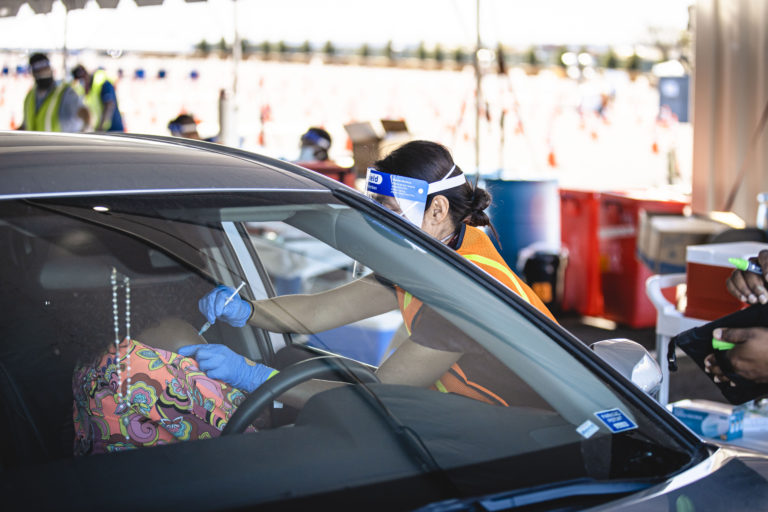
AmpThink, the master technology integrator for all of Hollywood Park and SoFi Stadium, was ready and willing to help stage the temporary network. Part of the company’s usual networking-prep operations includes cutting and preparing different lengths of optical fiber in its Garland, Texas, headquarters warehouse, so that it can be shipped to the site ready to use. Normally, that would be a fairly regular operation. But the winter storm that hit the Dallas area in mid-February was anything but regular.
According to AmpThink president Bill Anderson, the historic deep freeze and snowstorms that pummeled Texas made it a challenge just to get to the AmpThink offices. While AmpThink’s buildings were well insulated, many of the company’s neighbors were not as prepared, and the resulting aftermath was frozen water pipes that burst open and flooded the street. Once the temperature dropped, that flooding produced what Anderson called “a literal frozen river” of rutted ice more than a foot thick, which surrounded the AmpThink buildings.
“We usually use a forklift to move fiber from the storage building to the building where we process it, but we couldn’t get the forklift onto the ice,” Anderson said. Instead, Anderson and some co-workers ended up rolling 4-foot-high spools of raw fiber some 500 yards down the frozen street, where it could be prepped for its journey to Los Angeles.
Taking care of the cable
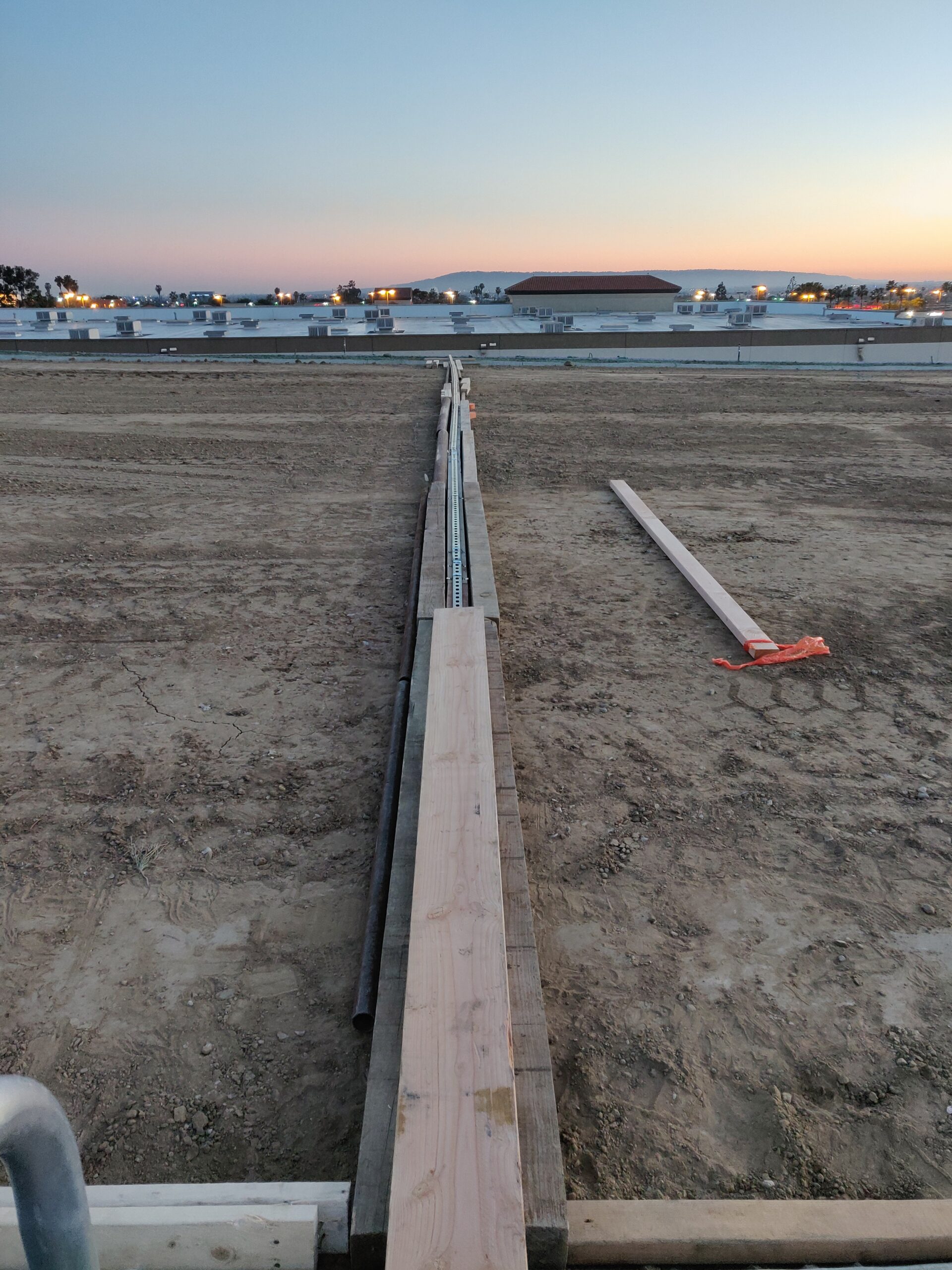
Once the fiber got to Hollywood Park, the MacGyver work wasn’t over for the AmpThink crew and the Hollywood Park IT team. According to Smrcka, the closest connection to the network was from an IDF that still required a long fiber run to the vaccination site — a challenge that forced the network technicians into construction mode to get the job done.
“There was some landscaping being done in the area, so we had to get creative with cable protection,” Smrcka said. For a long stretch of the path, the team got lucky and used a concrete drainage trough to weave the fiber through. But in the exposed parts of the lots the fiber crossed — where heavy truck traffic was taking place — the AmpThink and Hollywood Park teams went to a local Home Depot for lumber and other products to build ad hoc structures that would let vehicles drive over the cable without harming it.
Just like one of the TV episodes, it all worked out in the end, with teachers coming through in cars and buses to get the medicine that would help keep the virus at bay — at an operation whose network won’t soon be forgotten by those who put it together.
Please read the rest of the profiles in our series about stadium vaccination sites, including in-depth looks at the setups at Coors Field in Denver, Colo., Dodger Stadium in Los Angeles, and Levi’s Stadium in Santa Clara, Calif.





